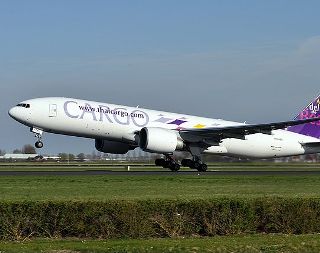 Prospects for global cargo demand in the short term are looking up after the industry has spent some time in the pits, according to the International Air Transport Association (IATA) Airline Industry Forecast 2014-2018.
Prospects for global cargo demand in the short term are looking up after the industry has spent some time in the pits, according to the International Air Transport Association (IATA) Airline Industry Forecast 2014-2018.
International freight volumes are expected to increase at a compound annual growth rate (CAGR) of 4.1 percent over the next five years, with emerging economies, particularly in the Middle East and Africa, to become the fastest-growing markets.
Tony Tyler, IATA’s director general and CEO, said this year, more than US$6.8 trillion worth of goods, equivalent to 35 percent of total world trade by value, will be transported around the world by air.
“So it is welcome to see a forecast for a return to growth for the air cargo sector after several years in the doldrums. An average of more than 4% growth for the next five years would be a marked improvement on the performance of recent years. Since 2011, for example, growth in freight tonnes has averaged just 0.63% per year,” Tyler added.
The Middle East is forecast to be the fastest growing region over the forecast period with a CAGR of 4.7 percent. The second fastest, Africa, will have a CAGR of 4.4 percent.
Asia-Pacific and Latin America, both with a CAGR of 3.8 percent, will be the joint third fastest growing markets.
The mature markets of Europe and North America will grow at 3 percent CAGR and 2.8 percent CAGR, respectively.
Biggest cargo markets
By 2018, the ten largest international freight markets will be the United States (10,054,000 tonnes), China (5,639,000), the UAE (4,974,000), Germany (4,763,000), Hong Kong (4,648,000), South Korea (3,487,000), Japan (3,480,000), the United Kingdom (2,808,000), Taiwan (2,350,000), and India (2,223,000).
The United States, China, and the United Arab Emirates (UAE) will each be adding more than 1 million additional tonnes of freight by 2018 compared to today. The UAE will have replaced Germany as the third largest market.
Fastest growing countries
Iran is expected to be the fastest growing country for airfreight volumes over the forecasting horizon with a CAGR of 7 percent per annum. However, it is growing from a low base so it will add just 44,000 tonnes of freight by 2018 for a total of 156,000 tonnes.
The second fastest growing market, India, will experience a CAGR of 6.8 percent to add 622,000 extra tonnes. Bangladesh (339,000 total freight tonnes), Ethiopia (319,000), and Nigeria (276,000) make up the remainder of the top five.
Another notable growth country will be Qatar. With a CAGR of 5.7 percent it will be the sixth fastest growing and see 361,000 additional tonnes to take its total freight tonnes to 1,484,000.
The fastest growing international routes will be between the Middle East and Asia, at 6.2 percent per year. Routes within the Middle East (4.6 percent), North America to South America (3.9 percent), and Europe to Southern Africa (3.8 percent) will also grow strongly.
Freight traffic shares
The largest freight traffic shares by route area in 2013 were within Asia Pacific (21.6 percent), Europe-Asia Pacific (12.3 percent), and North and Mid-Pacific (10 percent).
Looking ahead to 2018, within Asia Pacific and Europe-Asia are expected to increase their shares very slightly to 21.8 percent and 12.4 percent, respectively. Middle East-Asia shows the largest gain, up 0.8 percentage points to 6.9 percent.
Traffic shares for North and Mid Pacific, within Europe, and in the North Atlantic are all expected to decrease by at least 0.5 percentage points in 2018, to 9.5 percent, 9 percent, and 8.9 percent, respectively.
Significant volume imbalances will continue. The imbalance in flows from Asia to North America is estimated to be 1.1 million tonnes in 2018, and from Asia to the Middle East the imbalance will be 0.6 million tonnes.
Tyler said that the overall risks to the positive outlook are towards the downside and include trade protectionism, geopolitical concerns, volatility of oil prices, and competition from rail and sea.




